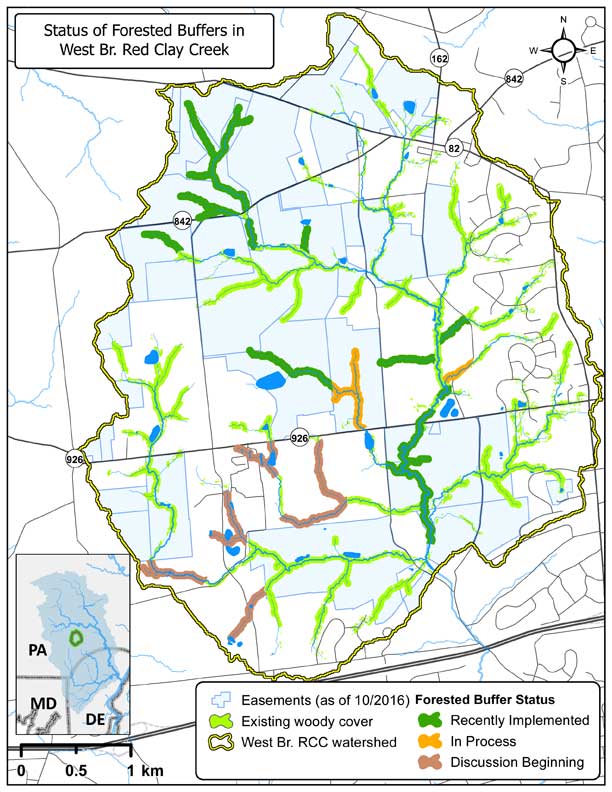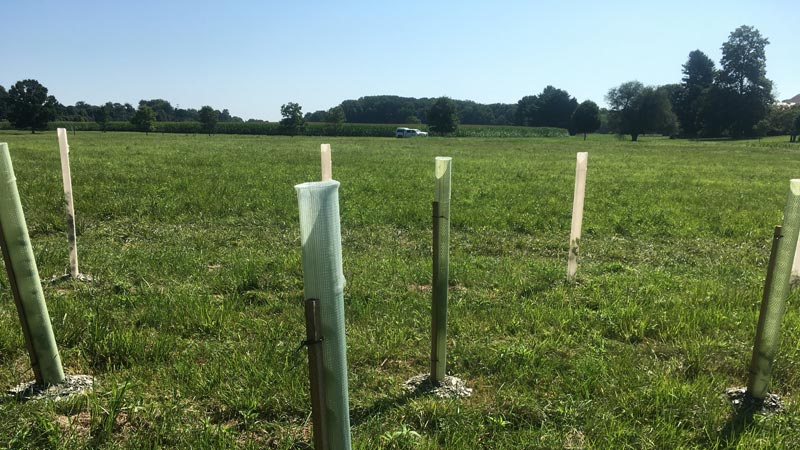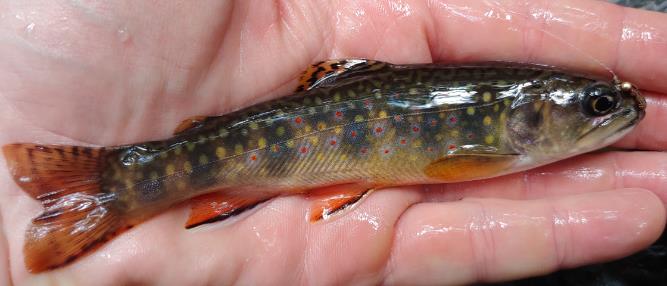Something wonderful is happening on the west branch of Red Clay Creek. It is getting its trees back — and perhaps its native brook trout, too.
Landowners in Chester County, Pennsylvania, are partnering with Stroud Water Research Center to reforest more than 100 acres of streamside areas in a community effort to protect and improve the stream’s health. Their vision and generosity is exceptional in both the total acres of tree plantings and the width of the riparian buffer — most achieving the gold standard of 100 feet on each side of the stream.
“Finding one individual willing to make this level of commitment is rare. Finding many such persons in one small watershed happens only once or twice in an entire career,” says David Wise, watershed restoration manager and project leader for the Stroud Center. “It truly is amazing and wonderful what they are doing.”
A Generational Connection to the Land

Ask them their motives and you hear of concern for land and water, for community, and for the future. Carol Davidson says, “I care about the land and our community. And the most significant staple is water.” Buzz Hannum says, “It’s a community effort that I want to support.” Buzz and Carol are siblings that grew up in the watershed, steeped in community traditions, including fox hunting.
Cuyler Walker shares that generational connection to the land, which shapes his views. “When you see the generations pass and the land remains, it elevates your awareness of the importance of conservation.”
Peter Welling, who like Carol, Buzz, and Cuyler grew up on the farm where he now lives, also looks to the future.
“The Stroud Center supported me in expanding the restoration project I started 20 years ago by fencing livestock out of the stream. Invertebrates, amphibians, and reptiles are appearing in greater numbers. As the trees mature, the stream will continue to restore itself. Only a little imagination is needed to envision the stream as it once was and can be again.”
Neighbors Helping Neighbors
Others also generously pitched in: Lisa Hayes and Michael Kane (who installed the widest of all buffers), East Marlborough Township, and several landowners whom Bern Sweeney engaged to do buffers some years ago while director of the Stroud Center. Jamie Hicks, who manages the cropland on many of these farms and has supported the Stroud Center’s efforts both by exceptional management of soil health and, like Peter Welling, by encouraging landowners to plant streamside forests.
The Stroud Center is pleased to be part of efforts with its neighbors in the Red Clay Creek watershed. The Stroud Center is providing the necessary funding to plant the trees and maintain them with support from the Delaware River Watershed Initiative, National Fish and Wildlife Foundation, Pennsylvania Department of Conservation and Natural Resources’ Bureau of Recreation and Conservation, Pennsylvania Department of Environmental Protection, Chesapeake Bay Foundation, and others (see below).
As an added benefit, the Stroud Center is also conducting trials of reforestation methods on selected sites:
- Does one style of tree shelter work better than others?
- Can stone mulch replace herbicides to protect trees from rodents?
- Can we reduce maintenance mowing and still have high tree survival?
The Stroud Center will also monitor stream recovery over time, documenting stream chemistry, temperature, and aquatic insect communities.

Reaching 100 Acres
Next spring, Burley and Lizzie Vannote will plant a streamside forest that takes the total acres restored in the west branch over 100. It’s fitting that the land where Robin Vannote, the Stroud Center’s first director, lived would provide that milestone. Robin Vannote was on site and part of the initial discussion with the Stroud Center’s David Wise in the fall of 2020, along with Peter Welling.
As the group walked and talked, Robin recalled when wild brook trout once swam in the cool stream beneath the shade of trees. With the grace of nature, and a helping hand from friends, perhaps some day soon, they will again.

Stroud Water Research Center is providing the funding for this restoration work. Sources of the Stroud Center’s funding include: William Penn Foundation; National Fish and Wildlife Foundation; Pennsylvania Department of Conservation and Natural Resources; Pennsylvania Department of Environmental Protection; Alliance for Chesapeake Bay; Chesapeake Bay Foundation; Marshall Reynolds Foundation
Learn More
- View research publications about trout by Stroud Center authors.
- Get engaged with our virtual learning resource, How Do Trout Grow on Trees?



